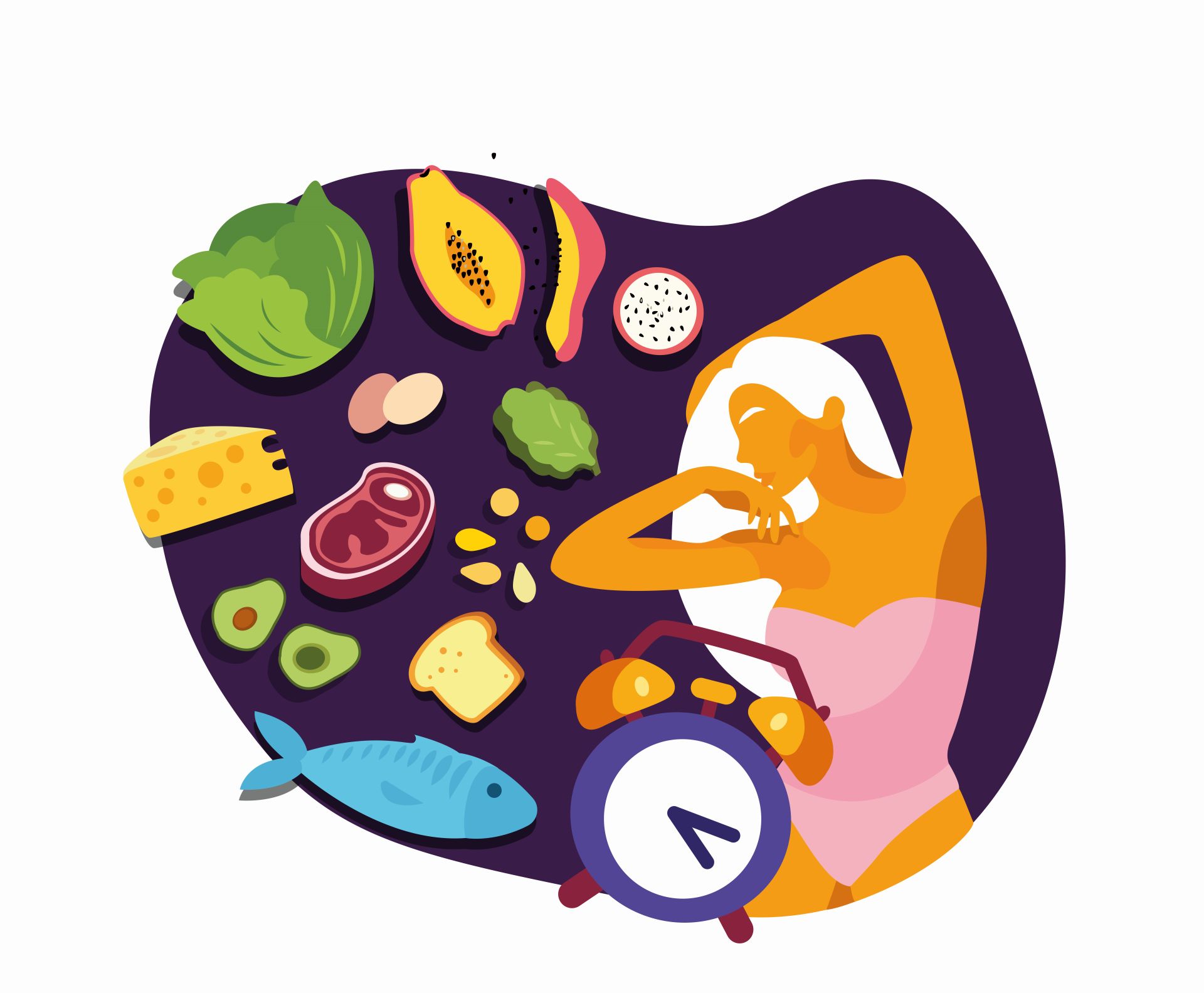In this article we would like to introduce you to another form of fasting. Specifically, we are talking about “interval fasting”, which is often also called “short-term fasting” or “intermittent fasting”. This form of fasting, which is becoming more and more popular, not only helps you to lose weight. It also helps your body detoxify.
What is Intermittent Fasting?
Intermittent fasting means that you have a period of fasting between your meals. This involves reducing your food intake to a specific window of time. This window is then followed by the fasting phase.
There is a simple reason for this: when we eat many small meals a day, our insulin levels are kept artificially high. If our insulin level drops again, a strong feeling of hunger sets in. However, if the body is not constantly supplied with new energy, fat burning is stimulated and stored fat deposits are reduced.
The breaks in eating during the fasting phase also relieve our body and digestive organs. Blood pressure and our sugar levels drop and the inflammation markers (inflammation levels in the blood) also decrease. Another advantage: the ingested food can be digested better and the nutrients absorbed better. This in turn has an additional positive effect on our immune system.
Popular Intermittent Fasting Methods
Intermittent fasting does not have just one method. Instead, there are many different methods and variations on how to do intermittent fasting. Some of the most popular methods include:
16:8 Intermittent fasting
In this method, you fast for 16 hours a day. You can eat normally for the remaining eight hours of the day. Of course, you should make sure you eat a healthy and balanced diet during this time. A big advantage of this method is that it is easy to integrate into everyday life: you can decide individually whether to skip breakfast or dinner during the 16-hour fast. If, for example, nothing is eaten from 5 p.m. onwards in the evening, breakfast can be started at 9 a.m. the following day. This variant of intermittent fasting is often called the “16:8 diet”.
Intermittent fasting with the 5:2 method
Another very popular form of interval fasting is the 5:2 method. With this variation, you eat normally five days a week. On the remaining two days, food intake is reduced to 500-800 kcal for women and 600-850 kcal for men. Fast-digesting carbohydrates such as wheat bread, pasta, potatoes and sugar should be completely avoided on the two fasting days if possible. During this time, the body learns to live off its reserves.
Alternate Day Fasting (alternate fasting)
Alternate day fasting – or alternate fasting – is also a very popular form of interval fasting. With this method, you can eat normally one day, followed by a fasting day. On this fasting day, however, you need to make sure that you only give your body 25% of your daily calories as energy.
Dinner Cancelling
With dinner cancelling, I skip dinner completely two or three nights a week. Only water and unsweetened tea are allowed in the evening. The meal breaks should last at least 14 hours at a time.
Intermittent fasting offers a certain flexibility through these different methods. Thus, it should not be a problem for most people to integrate intermittent fasting or short-term fasting into their daily routine.

What can you drink during Intermittent Fasting?
No matter which of the above-mentioned variants you choose: You should make sure that you supply your body with sufficient fluids. This also applies to the fasting period. However, you should only drink calorie-free beverages such as water or unsweetened tea.
The most common mistakes in Intermittent Fasting
Since the rules of Intermittent Fasting are quite simple and especially the 16:8 method is very easy to integrate into your daily routine, there are a few things about Intermittent Fasting that can get in the way of your success.
- You have chosen the wrong method
If you choose the wrong interval fasting method at the beginning, you will quickly lose motivation and will usually not be able to achieve satisfactory results. - Wrong expectations and high impatience
Your body and especially your metabolism certainly need a little time to adjust to new situations. This means that it can take two to three weeks before you get used to longer breaks from eating. It can also take a little time before the first successes show up on the scales. - Uninhibited food intake during meal phases
A very popular mistake with Intermittent Fasting is to continue to eat uninhibitedly during the meal phases. However, it is especially important during these phases to eat consciously and to eat more healthy foods. - Eating too little
Especially those who start with Intermittent Fasting and are highly motivated to lose weight often make the mistake of eating too little during the eating phases. Unfortunately, this has the effect of shutting down the metabolism and lowering the energy metabolism. Later, this threatens the yo-yo effect that often occurs with dieting. In addition, such “radical diets” mainly ensure that hunger and dissatisfaction become constant companions. - Too little exercise
Even with intermittent fasting, it is important to get enough exercise. Therefore, try to integrate exercise into your daily routine – whether walking, cycling, walking – the main thing is that your body is in motion and not constantly thinking about the prolonged fasting phase.
Experiences with Intermittent Fasting
Have you already had positive experiences with Intermittent Fasting? Please leave us a comment telling us which method works best for you and what success you have had with interval fasting.
By the way: In our shop you can also find our delicious fasting tea, along with many other healthy herbs and spices. With its blend of birch leaves, rosemary, parsley root, goldenrod, field horsetail, milk thistle and dandelion leaves, it is the ideal companion during the fasting period.






Leave A Comment